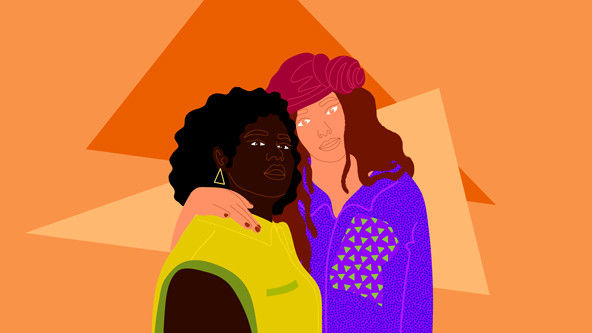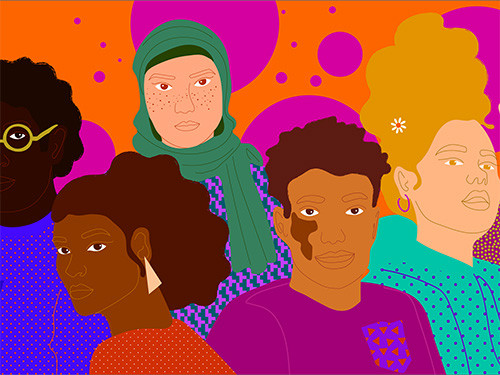 (Illustration by Aurélia Durand)
(Illustration by Aurélia Durand)
The concept of “social innovation” has been the catalyst of change in nearly every aspect of daily life for more than a decade. It has been driven by the belief that if innovation can fix significant market-driven technological problems, then it can fix significant social problems as well. Examples include everything from micro-lending in the banking industry to changes in medical care delivery and the transformation of communicaton technology.
This brand of social innovation sees the world of social problems almost entirely as “design challenges.” It assumes that the secret sauce of solutions comes from observing the problem, generating ideas to address it, and prototyping and testing small-scale fixes. This process works well, for instance, to help people access to clean water and wind-powered electricity. But when it comes to the deeper problem of structural racial inequality, it stumbles.

Solving such inequities requires understanding and confronting their underlying causes. The contemporary brand of social innovation often struggles to do so because it is mostly focused on creating quick fixes to surface problems—the equivalent putting a Band-Aid on a cancer sore; the symptom of the disease is treated, but not the source.
For example, food deserts are symptoms of the more fundamental social issue of racially-biased policies that create inequitable access to one of the most basic human needs. Social innovators often go about addressing them by rapidly creating and testing prototypes of solutions that bring healthy foods to communities without understanding the underlying cause—namely historic and entrenched racial exclusion. Food deserts—not to mention poverty and poor-quality education—are not natural disasters that can be fixed with this sort of response. Rather, they are the result of man-made policies and practices that are fueled by racial bias and structural inequality.
To place race at the center of conversations and strategies which aim for diversity, equity, and inclusion means moving beyond solving surface problems and acknowledging where and how inequity is baked into current systems and structures. That entails spotlighting the underlying causes of racial inequality: people's hidden biases and the institutional culture that normalizes whiteness. And then we must cultivate a collective awareness of these problems and build accountability structures to ensure more inclusive organizational practices. If these steps aren't taken, innovative solutions may provide some relief of the symptoms of institutionalized racial inequality, but the underlying racial bias and attitudes will continue to go unchecked, and therefore ultimately contribute to new social problems.
Integrating Race and Innovation
The real design challenge for this new generation of social innovators is to combine a deep understanding of both racial inequality and social innovation to offer a more effective strategy for solving complex problems. The team at Flourish Agenda, Inc., has learned this imperative through more than 25 years of collaborating with innovative NGOs to address both the root causes and surface-level symptoms of racial inequality.
So, how might social innovation create durable solutions that address the root causes of racism and racial bias? Our experience working with organizations ranging from small community groups in church basements to boards of directors of large foundations has led us to three insights:
1. Lead with building a shared understanding of the underlying causes of racial inequality. We have seen excellent projects aimed at solving complex social issues succeed and fail. The one ingredient for success that matters above all others is the degree to which people possess a shared understanding of how racial inequality may have caused the problem they are attempting to solve.
In our collaborations with large systems (like school districts) that aim to address racial disparities, we have seen they sometimes expect innovative strategies to provide quick-fix solutions—for example, recruiting more racially diverse teachers or recommending the latest racially diverse textbooks for their curriculum. But we don’t start there, because these are surface solutions that don’t get at the root cause of educational disparities, which are the racial biases, attitudes, and beliefs about communities of color. Instead, we focus on building a shared understanding of how racial inequality, hidden attitudes, biases, policies, and practices have created poor school climate and academic achievement.
While offering a laundry list of solutions could indeed help solve a particular problem, doing so would not provide the awareness required to develop innovative solutions to other racial equity problems. A shared awareness of the underlying causes means that people understand how structural oppression shapes their institution, as well as the individual experience of oppression. A shared understanding requires that people engage in deeper reflection about their own biases and examine how their racial bias shows up in their work. Addressing the root causes of racial inequality entails intellectual understanding and emotional buy-in. Ultimately, a shared awareness builds the organizational accountabiliy needed to address underlying causes of racial inequality.
2. Create systems of support that build the soft skills required to solve hard problems. Social innovation efforts are often product driven, not process driven. The focus on getting from problem to solution sometimes overshadows the quality of the process and the soft skills necessary to truly create effective, lasting solutions to racial inequality.
When we are product driven, we don’t develop the deeper awareness needed to approach related problems that inevitably will show up in complex systems. We know that people need to feel safe in order to explore their own bias without feeling criticized or judged, but they also need to be pushed outside of their comfort zone in order to reveal how their bias creates and reinforces inequality. People need a common language to have tough conversations about race. In order to be inclusive and create equity-based solutions to racial inequality, they need to feel a shared commitment and intention to dig below the surface problems. In order to tackle the root causes of racial inequality head on, organizations need spaces for vulnerable, honest dialogue.
We provide breakthrough experiences and retreats where teams of people can engage in reflection and collective experiential learning. We help teams build vulnerable authority, the power that comes from practicing humility, cultivating curiosity, and creating openness to deep learning. While these may be unfamiliar and uncomfortable at times, we know that addressing racial inequality requires that people let go of the idea that they have all the right solutions to racial inequality. Vulnerable authority builds the interpersonal bonds that allow teams to be honest about painful experiences with racism, think about their own racial biases, and reimagine solutions that get at some of the root causes. This means focusing on building trust among organizational leaders, creating opportunities to share their fears and aspirations, and fostering the sense of safety that is required to feel heard.
3. Be honest about organizational readiness for innovation and racial equity. Let’s be honest, not all organizations are ready to commit to the work of combining social innovation with racial equity. It takes time, resources, commitment from leadership, and most importantly, a culture of humility, transparency, and learning.
We know that innovative social solutions that build racial equity cannot be achieved in a three-hour training session. People need opportunities to heal from the harm of racial inequality. Inequality breeds stress, harms relationships, and erodes trust. We learned this lesson the hard way. On several occasions, we dropped into an organization for what was to be a quick discussion or training on racial equity only to find ourselves enmeshed in a deeply emotionally-charged conversation without the time or space to help the organization process the experience.
Well-meaning executives sometimes underestimate the emotional depth of the harm, shame, pain, and anger people feel when talking about their experiences with racial inequality. To gauge your individual and institutional readiness to engage in social innovation and racial equity, you might ask yourself a few questions:
- Does the board or governing body of my organization have buy-in to address racial equity?
- Does the CEO express enthusiasm and passion for both social innovation and racial equity?
- Are there resources (time, money, human capital) that can support moving a social innovation and racial equity agenda?
Those who believe that they are using social innovation to address social problems need to reflect on whether they are centering race and racial inequality in their thinking and practice. This will require more than reading the latest literature on race or reviewing the top blogs on inequality. It will also require something we all have but sometimes undervalue—our hearts. Not that thinking is overrated, but sometimes we spend much more time pondering rapid solutions to problems than on feeling the steady pace of self-discovery. We suspect that, for those of us on the journey toward equity, we will begin to see the importance of engaging our hearts and developing courage to take a hard look at the causes of inequality and reflect on our responsibility towards nurturing equality.
From that starting place, we can move forward with the power we gain when we are honest, humble, and open to learn. This vulnerable authority can embolden us to employ social innovation and design a world where everyone has the opportunity to flourish.
Support SSIR’s coverage of cross-sector solutions to global challenges.
Help us further the reach of innovative ideas. Donate today.
Read more stories by Sai Seigel & Shawn Ginwright.

